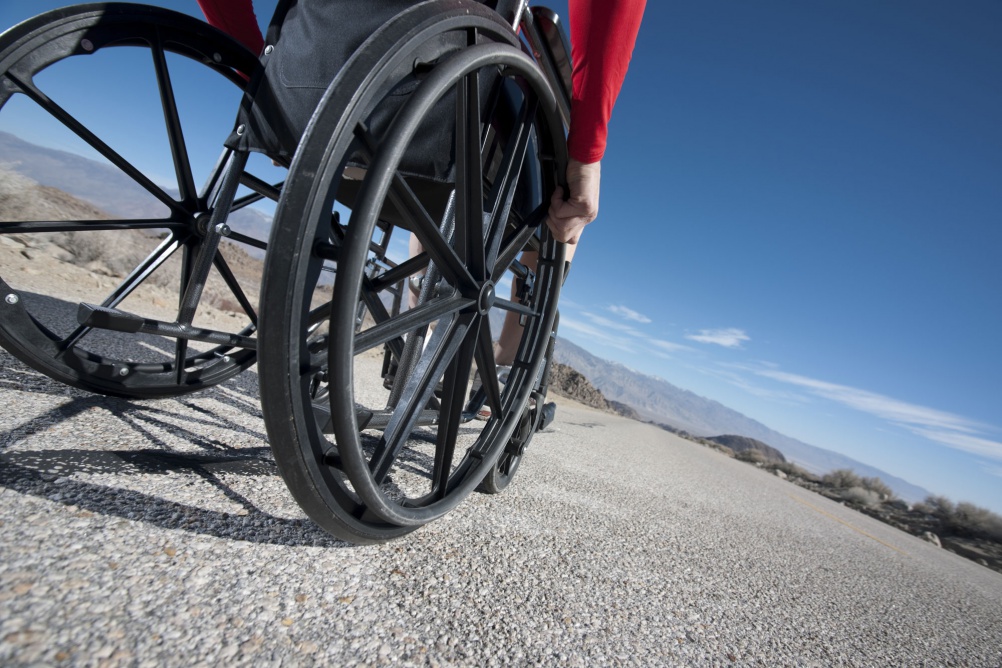Why products for disabled people should signal diversity, not survival
BESbswyBESbswyBESbswyBESbswyBESbswyBESbswyBESbswyBESbswyBESbswyBESbswyBESbswyBESbswyBESbswyBESbswyBESbswyBESbswyBESbswyBESbswy
We speak to Dr Gabriella Spinelli, reader in Design Innovation at Brunel University, about her recent project with The Royal National Institute for the Blind, which uses members’ views to accredit and determine the products it sells.

Products designed for those with disabilities and older people tend to fulfil the “basic condition for a basic life”, says Dr Gabriella Spinelli, reader in Design Innovation at Brunel University – but in reality, they should be doing much more.
That’s why, for the past six years, Spinelli has been conducting research into inclusive design, with the hope of bringing products to market that don’t just give people “the right to survive” but help them to feel accomplished, attractive, and equal.
She has summarised her research into a six-point manifesto (see bottom of article), indicating how products should be designed to be “inclusive” (“Though I don’t like the term,” she says. “It indicates you’re designing for somebody who’s an outsider, whereas you should be designing for diversity and equality.”):
On the back of her research, Spinelli was commissioned by Age UK in 2010 to implement her main findings into a new business model that informs the sale of their products – and then in 2014, by the Royal National Institute for the Blind too.
Spinelli’s product accreditation scheme for RNIB launched last month, and directly incorporates the opinions of users, who determine which products make it to the shelves.
The scheme, which is ongoing, uses the RNIB database of members and carers, who are asked if they would like to take place in the study. They are then provided with products to “test”, and are asked to provide feedback after a certain amount of time detailing user experience. The products that gain a high user approval rate are then accredited, and are able to be purchased from the RNIB’s website.
“It gives an amplified voice to the user of the product itself,” Spinelli says. “It doesn’t profile a demographic group, such as experts in a lab, who will not even be using the product. We cut across social groups and genders to select a panel, and the choices we make are fully tailored to the product we are testing.”
Spinelli says the accreditation process can help to provide a benchmark for users – and manufacturers.
“Users will have a clear signal from a recognised agency that this is a quality product, which is significantly more successful than other products on the market,” she says. “And for companies, it’s therefore a leverage point to put more effort into designs with more inclusion.”
An RNIB product that has recently passed accreditation is an audible/vibratory Liquid Level Indicator: it can be placed on the side of an object such as a mug and enables those with impaired vision to pour water while recognising when it reaches the top through a series of high frequency sounds. Another is an accessible debit card in association with RBS, which incorporates brail, larger text and dents to make it easier for the partially sighted to use.
“The debit card has had interest from those without visual impairment as well,” Spinelli says. “We should design for diversity and remember that the products might also be appealing for somebody who’s able-bodied. Glasses, for instance, were initially designed for a ‘disability’, but now they’ve become a fashion item.
“Charities are there to support and make the life of people more bearable,” she says. “But if we only take this as the standard, we’re still designing for survival and not for a rich life.”
And often, “designing for survival” means that beautiful design falls by the wayside, she says: “Take wheelchairs, commodes and raised toilets as objects of everyday life – they’re ugly, difficult to move and cumbersome. These are things needed in the houses of not only older people, but young people too.
“It’s reinforcing the message that being disabled makes you have a disabled life,” she says. “Designs focus on functional things such as using the toilet, and washing yourself – whereas they should merge the functional and the aesthetic. Everyone is entitled to an elegant, sociable, sexual life.”
Spinelli hopes the RNIB will continue to work with Brunel University and its scientific research department to accredit products that help to convey this message.
“At the moment, the landscape is very limited for products designed for diversity and for choice,” she says. “And no choice means no competition – which means no improvement.”
Six-point manifesto
- Design with the individual in mind, not for the condition
- Don’t strip off aspirations from products and experiences
- Don’t assume that everyone will have an enjoyable product experience just because the majority will
- Design products that can evolve to support the individual
- Design for happiness and dignity – not just function
- Design to make people feel unique – not different
BESbswyBESbswyBESbswyBESbswyBESbswyBESbswyBESbswyBESbswyBESbswyBESbswyBESbswyBESbswyBESbswyBESbswyBESbswyBESbswyBESbswyBESbswy
-
Post a comment




